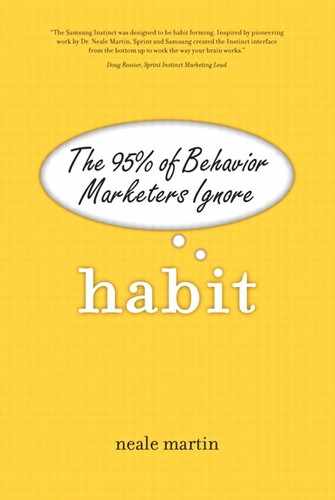Cue
A cue activates a habit, similar to the first domino tumbling all the rest. A cue can be any stimulus associated with the context of the habit, including sights, sounds, smells, tastes, and even a touch. A combination of stimuli can also activate a response, such as the smells and sounds of a fast food restaurant cueing the script to order a burger and fries. Linking cues to behavior accelerates habit formation.
Research in Motion (RIM), a small Canadian company, entered the cutthroat world of wireless data in the late 1990s, going head-to-head with market leader Motorola. RIM’s unique solution—a combination of a small swath of wireless spectrum, a handheld device, and middleware software—enabled mobile workers to receive their office email when they were away from their desks. At that time, other providers required the user to have a separate wireless email account. As more business processes came to depend on email, the RIM BlackBerry became essential.
However, what turned the BlackBerry into the CrackBerry (as users not-so-jokingly call it) is cue-based training. Mobility became the context for the BlackBerry, but the device’s cueing mechanism leads to addiction. Emails are pushed to the BlackBerry so the user doesn’t have to consciously think about retrieving them (the power of reducing steps). Upon arrival, the emails announce themselves with a tone or vibration, which becomes the cue. The power of the cue is that it triggers a behavior—checking the new email—which is immediately reinforced because the email has already been downloaded. The BlackBerry is also an excellent example of a device that works with the habitual mind so that the executive mind can focus on the task, evaluating and responding to emails.
